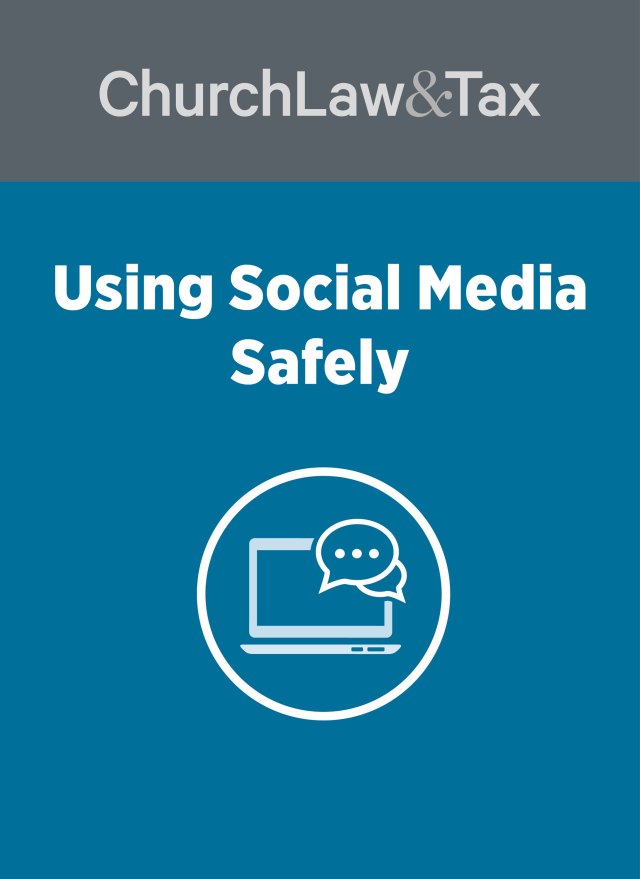Key point 4-11.1. Clergy who engage in sexual contact with an adult or minor are subject to civil liability on the basis of several legal theories. They also are subject to criminal liability.
The Indiana Supreme Court upheld the conviction of a teacher for the attempted seduction of a minor based on his communications with a 16-year-old student via an Internet social network. A high school teacher and coach communicated via an Internet site (Facebook.com) with a 16-year-old student. The communications, which were replete with sexual references and images, constituted “sexting.” While the teacher repeatedly urged the girl to sneak out of her house while her parents were asleep and join him, such an encounter never occurred. The relationship was entirely “virtual,” using social media.
The teacher’s actions came to light after the student informed her parents, and he was charged with two counts of attempted child seduction. Under Indiana law, a teacher who engages in touching or fondling a student between the ages of 16 and 18 with the intent to arouse or satisfy the sexual desires of the teacher or the student commits “child seduction,” a class D felony. Indiana law also provides that a person “attempts” to commit a crime when, “acting with the culpability required for commission of the crime, he engages in conduct that constitutes a substantial step toward commission of the crime.” The teacher was found guilty of two counts of attempted child seduction.
The teacher appealed, claiming that online solicitation was not aimed at the “immediate commission of a crime” and therefore he had not committed the crime of attempted child seduction.
A state appeals court reversed the teacher’s convictions, noting that as a matter of law the Internet solicitations did not constitute a substantial step toward the crime of child seduction because the teacher’s requests were simply an invitation to the student, not the required “urging” or “persuasion,” and in any event, because the requests were not made in the student’s presence, the student was never in a position to submit to the solicitation, so the requests related to future conduct rather than the immediate commission of a crime.
The state supreme court reversed the appeals court’s ruling and reinstated the trial court’s conviction. The court acknowledged that “what constitutes an attempt offense in the area of sex offenses against children can, on occasion … involve subtle distinctions in behavior and the nuance of the context in which the behavior occurs.” But the court concluded that in this case it was reasonable for the jury to conclude that the offense of attempted child seduction had occurred.
What This Means For Churches:
In many states the transmission of sexually explicit text messages (“sexting”) via a cell phone or other electronic device constitutes a crime. Such messages also can be used as evidence in civil lawsuits. For example, assume that an adolescent female in a church youth group claims that the youth pastor had nonconsensual sexual contact with her. She sues the church, claiming that it is responsible for the pastor’s acts on the basis of negligent hiring and supervision. The victim subpoenas the youth pastor’s text messages to establish the truth of her claims.
Several courts have addressed the issue of criminal liability of pastors for engaging in sexting. Consider the following examples:
Example. A pastor was convicted of several sexual offenses involving his sexual solicitation and molestation of a minor, and sentenced to a minimum prison term of 186 years. One of his offenses was “contributing to delinquency of a minor,” which was based in part on several sexually explicit text messages (“sexting”) that the pastor sent to the minor on his cell phone. 2010 WL 10409 (N.C. App. 2010).
Example. A youth pastor (the “defendant”) was sentenced to five years in a state prison as a result of various sexual offenses with a minor female (the “victim”). The victim had sought out the defendant for counseling as a result of her depression and suicidal thoughts that stemmed from an incident of sexual abuse which occurred when she was nine or ten years old. A sheriff came upon the defendant and victim parked off a gravel road in a rural area at night. The defendant claimed he was parked in a remote area because he was trying to get a signal on his cell phone. The sheriff told him “it wasn’t smart to be out on a gravel road parked like that with a youth in his vehicle,” and he told him to “use his head.”
The sheriff later informed the victim’s father about what he had seen, and the father instructed the defendant to have no further contact with his daughter by cell phone or text message. A few weeks later the sheriff again came across the defendant and victim in a car parked along a secluded farm road. The defendant claimed that he was counseling the victim regarding an incident of sexual abuse that had occurred several years earlier. The sheriff again informed the victim’s parents.
The defendant was later charged with several sex offenses. An investigation by the sheriff’s office uncovered text messages between him and the victim containing strong sexual content. His cell phone contained a partially nude image of the victim, and he sent a partially nude image of himself to the victim via a text message. This evidence was used in prosecuting the defendant for violating a state law making it a criminal offense for the sexual exploitation of a counselee by a counselor. The court found that the defendant, as a youth counselor engaged in counseling the victim, was a “counselor” and it sentenced him to a prison term of five years. State v. Duvall, 776 N.W.2d 301 (Iowa App. 2009).
Example. A court used sexually explicit text messages between a youth pastor and a female member of the youth group to corroborate her account of sexual exploitation. The court sentenced the pastor to a prison sentence of four years to life. 2009 WL 1476934 (Colo. App. 2009).
Example. A youth pastor (the “defendant”) sent several sexually explicit emails to a female adolescent in the church’s youth group. The victim told her mother about the emails. After reviewing the messages, the mother contacted the police. A police officer questioned the defendant about the emails. The defendant admitted that he sent the emails, and expressed deep remorse for his actions. In the transcript of this conversation the defendant stated that he had made “a very, very poor decision to engage in these email conversations with her, uh, and allowed myself to get caught up in things of a sexual nature.” The state charged the defendant with six counts of communicating with a minor for immoral purposes under a state law making it a class C felony for a person to communicate with a minor for immoral purposes through electronic communication. At trial, the defendant testified that he did not remember sending any of the emails. The jury didn’t believe him, and found him guilty on all six counts. The trial court sentenced the defendant as a class C felon to the statutory maximum of five years per count. State v. Haack, 2010 WL 4216705 (Wash. App. 2010).
Example. A volunteer youth leader (the “defendant”) in a local church was sentenced to eight years in prison on each of two counts of sexual assault in the first degree and contributing to the delinquency of a minor. At trial, the defendant’s former husband testified that he suspected his wife of having an affair. He set up surveillance in his house, then left for the weekend. When he returned and retrieved the hidden device, he watched the videotaped recording of his wife and a 17-year-old male consuming alcohol and having sexual relations. He gave the police this recording, which led to the defendant’s arrest and prosecution. Among the several items of evidence introduced at trial by the prosecution were several sexually explicit text messages from the defendant that the mother of one of the victims found on her son’s cell phone. Cluck v. State, 2009 WL 1362863 (Ark. App. 2009).
The lesson is clear: social media and electronic devices can create risks of both criminal and civil liability, and this fact should be frequently stressed to church staff members. 17 N.E.3d 270 (Ind. 2015).




